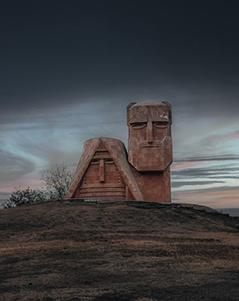19.09.2024

Around 120,000 Armenians were forcibly displaced from the Republic of Artsakh as a result of Azerbaijan's military aggression one year ago, on September 19, following nearly ten months of blockade, physical and psychological violence, oppression, decades of anti-Armenian propaganda, and hatred.
With the clear memory of the violence that began in the early 1900s and occurred in several waves over different historical periods, leading to the deaths of tens of thousands of Armenians, and with a full understanding of the aggressor's genocidal intent, the Armenians of Artsakh had no other choice than to leave their homeland within just a few days.
The ten-month blockade, which according to the Convention on the Prevention and Punishment of the Crime of Genocide was a genocidal act aimed at creating conditions that would lead to the physical destruction of ethnic Armenians or cause them physical harm, was followed by another crime against humanity—forced displacement.
As a result of a clear and consistent policy, Armenian Artsakh was first depopulated of Armenians, followed by the erasure of the region's Armenian identity, through the destruction and/or distortion of the local Armenian tangible and intangible heritage.
Reaffirming the resolution adopted on September 2, 2024, by the International Association of Genocide Scholars regarding Artsakh, it becomes imperative to remain steadfast in protecting the internationally recognized rights of Artsakh and its Armenian population and to hold the perpetrators accountable under international criminal law.





